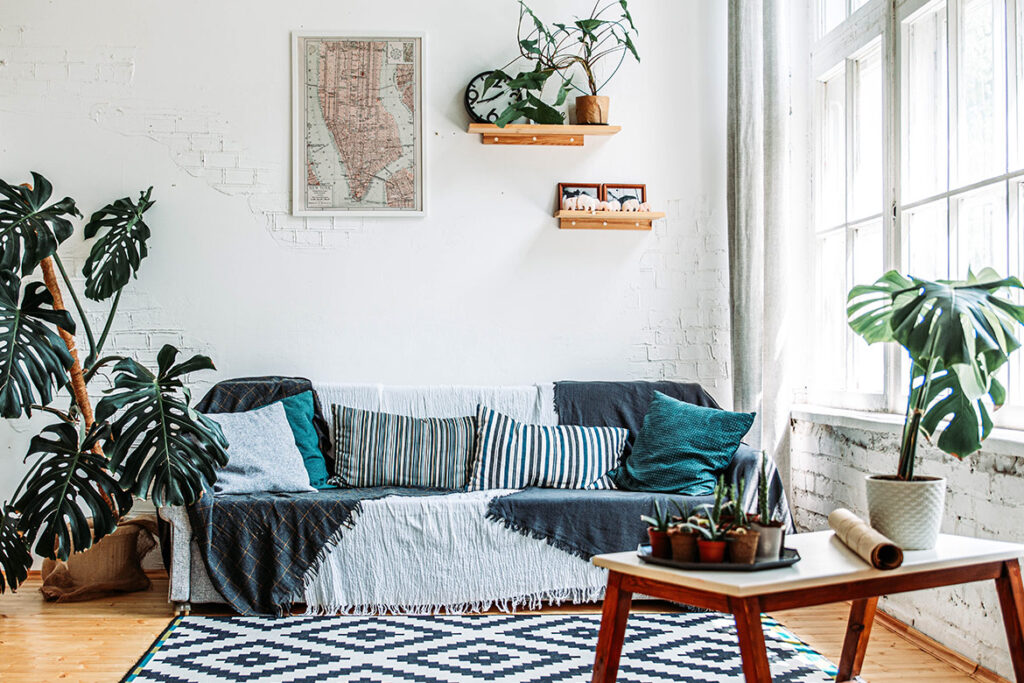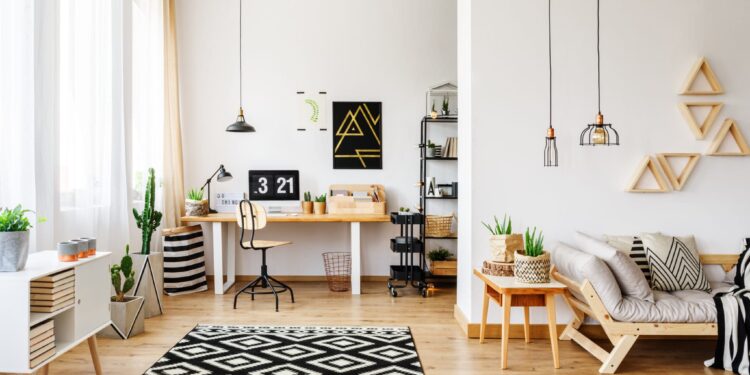Scandinavian décor is very popular among homeowners and top interior design companies alike for its comfortable minimalism, durable build quality, and focus on the essentials. Spaces are open, airy, and bright, utilizing a mix of organic textures and furnishings that look and feel natural when paired together. The style offers several significant differences from other standard forms of modern interior design, including a distinctive interaction with sustainability principles and “hygge.”
What is Scandinavian Interior Design?
Scandinavian interior design originated from Norway, Denmark, and Sweden and was originally designed to match the lifestyle of the country’s inhabitants. Other Nordic countries, including Iceland, Finland, and the Faroe Islands, borrow many of the same design principles to create more unique styles. The principle of “Hygge” (a Danish word that translates most closely to “coziness”) is at the heart of Scandinavian interior design, ensuring that spaces provide comfort without excess and a distinct connection between the indoors and surrounding outdoors.
In this article, we’ll look at some of the essential elements of Scandinavian design and identify what makes it both popular and timeless. If you’re looking to upgrade your home or apartment with a balance between style and visual harmony, then Scandinavian design might be the right choice for space.
Comfortable Minimalism
Scandinavian designs create clutter-free interiors in a similar fashion to modern interior design, but do so without removing the classic comforts of home. By removing ornate fixtures and finishes, the durability and build quality of the space’s elements take center stage in the design. Kitchen countertops, dining tables, and endpieces are free from decorative knick-knacks and are altogether easier to use.
Walls are kept free from excessive artwork and décor, with the exception of a few selections that serve as focal points for the room. The result of Scandinavian minimalist design is a collection of clean lines and hand-crafted finishes that does not sacrifice the homeowner’s comfort and creates a sense of calm instead.
Organic Colors and Textures
Scandinavian interior designs feature a natural color palette that starts with a light, airy white and includes a mixture of grey, blue, black, green, and light wood to complement it. While the interiors associated with the style are generally bright and welcoming, they rarely use sharper, warmer accent colors, such as red, orange, and yellow. The goal of the color palette is to make the most of the space’s incoming natural light, while still making the interior of the home look organic and timeless.

Natural Light and Connections With the Outdoors
Scandinavian interior designs originate from countries where natural light is generally limited, particularly during the colder months of the year. As a result, the style places an emphasis on welcoming in as much sunlight as possible, which allows each room to feel more spacious and inviting.
Greenery and potted plants are a common addition to the space and complement the organic colors and textures of the furnishings and décor pieces. They also bridge the gap between the home’s interior and exterior spaces, creating a more seamless experience that connects the homeowner with the outdoors.
Durability in Design
Without the ornamentation and detailed textures of traditional interior design and furnishings, the quality of your design elements is drawn into focus. When it comes to items like your kitchen countertop, dining table, or wall art selections, durability and multi-functionalism are a must. Higher durability furnishings and light fixtures also help to make your space last for years to come in terms of visual quality, instead of simply following the latest trends.
Statement Light Fixtures
The light fixtures for the Scandinavian home’s key living spaces are an opportunity for the designer or homeowner to include an eye-catching display that functions in a similar fashion to a modern or contemporary art fixture. Exposed light bulbs and unique, fashionable metalwork help to give the space an artistic character, despite featuring minimal ornamentation. Other creative elements often come in multiple, including framed artwork and photos. Rather than a single piece, there is a showcase of four to eight frames.
Mixing Textures and Surfaces
Scandinavian interiors are not bound by a single texture or furnishing design. Certain living room elements, from the coffee table to the bookcase, likely make good use of glass surfaces, promoting elegant modernism. At the same time, the end tables, mantelpieces, and other finished elements might include warm wood, laminate surfaces, or ornate metalwork. When it comes to selecting individual textures for the space, not everything has to follow a uniform aesthetic.
Efficient Use of Square Footage
Scandinavian interior designs are nothing if not efficient in their use of the home’s space. Every element, from furnishings to kitchen appliances and arrangements, is placed so that it offers an even balance between visual appeal and high-functioning usability without occupying more space than necessary. A minimalist open space becomes a valuable asset for making the home feel more spacious than it might with other design styles.
Conclusion- What Defines Scandinavian Interior Design?
Scandinavian interior designs are a comfortable yet minimalist approach to arranging your home’s interior architecture. The bright, airy spaces and high-functioning designs of the individual elements put the quality of your furnishings and decor pieces on display without the ornamentation and detailing of classic and traditional interior design.
Natural light, organic finishes and building materials, and a clear connection with the surrounding outdoors make Scandinavian interior design distinctly comfortable and cozy, while still maintaining a minimalist aesthetic. To integrate this style and quality into your home, speak with a local luxury interior designer.





